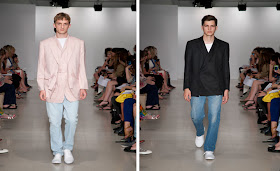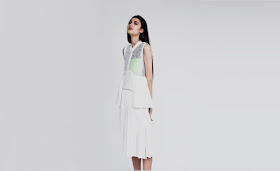Royal regalia is not something we usually feel inclined to shout about, so we'll let London-based jeweller Solange Azagury-Partridge do it for us. In a salute to Queen Elizabeth II, who celebrates her 60th year on the throne this week, the jeweller has launched her own Regalia collection - an addition to her Aristocrats range.
Using traditional guilloché and enamelling techniques to create a ribbon effect, Azagury-Partridge's lofty inspiration for this new collection is the Order of the Garter, the highest award for chivalry in England. The ring, cuff and earrings give the wearer the feeling of being garlanded with ribbons of honour. Naturally, a tiara is also included in the collection and, in a gently humorous homage to the Queen's penchant for traditional jewellery, a pretty diamond and enamel bow brooch.
Azagury-Patridge even went so far as to host a traditional English street party to celebrate the Queen's Jubilee and the new pieces at her New Bond Street store in London, complete with star guest - a cardboard cut-out of the Queen
Using traditional guilloché and enamelling techniques to create a ribbon effect, Azagury-Partridge's lofty inspiration for this new collection is the Order of the Garter, the highest award for chivalry in England. The ring, cuff and earrings give the wearer the feeling of being garlanded with ribbons of honour. Naturally, a tiara is also included in the collection and, in a gently humorous homage to the Queen's penchant for traditional jewellery, a pretty diamond and enamel bow brooch.
Azagury-Patridge even went so far as to host a traditional English street party to celebrate the Queen's Jubilee and the new pieces at her New Bond Street store in London, complete with star guest - a cardboard cut-out of the Queen



























































